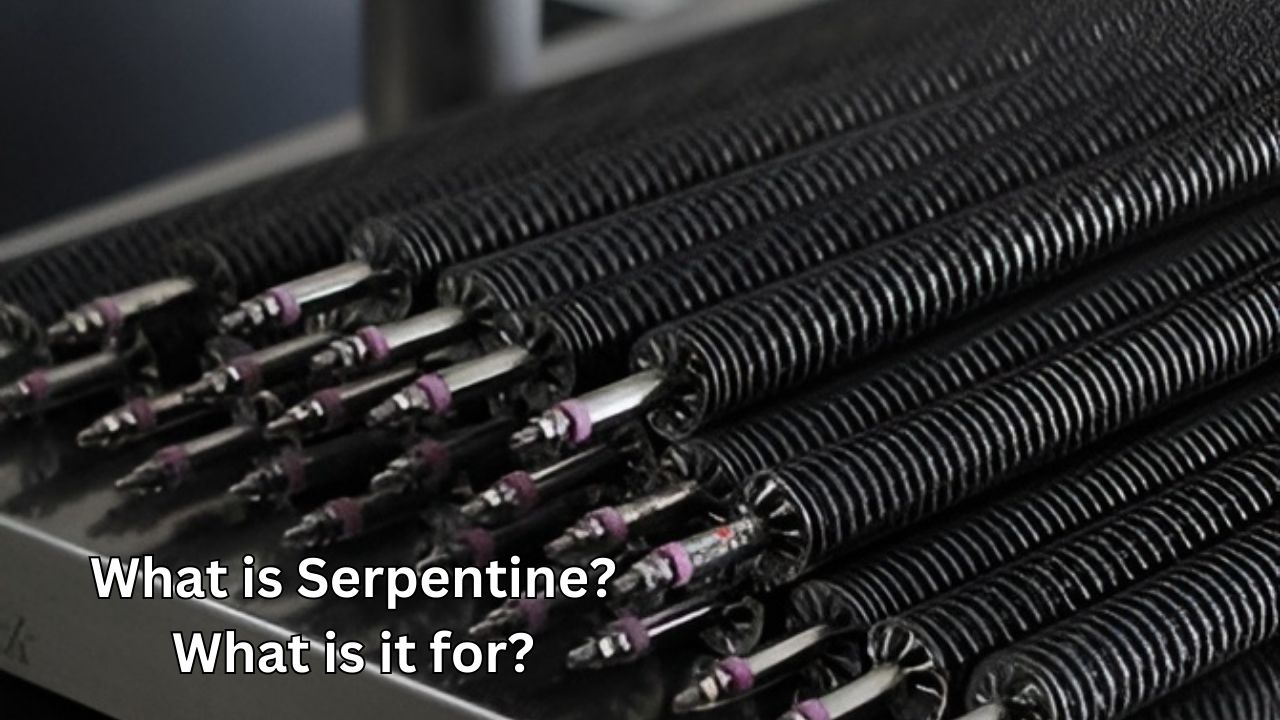
Resistance Life Enchance: Operation Maintenance and Savings Tips


Serpentine is a group of minerals that are commonly found in nature, resistant to high temperatures, and have a flexible structure. These minerals are generally greenish in color and can vary in type depending on their chemical composition. Serpentine minerals are primarily composed of silicate compounds and are rich in magnesium. Due to these properties, they are used in various industrial fields, particularly for thermal insulation and energy efficiency.
Serpentine is a mineral formed through geological processes, especially through the hydrothermal alteration of ultramafic rocks in the oceanic crust. During this process, minerals exposed to high pressure and temperature undergo a transformation called serpentinization. As a result, serpentine minerals become highly resistant to heat and chemical erosion. Therefore, they are preferred in industries, especially in systems exposed to high temperatures.
One of the most important application areas of serpentine is the construction sector. Thanks to its thermal insulation properties, it is used to enhance energy efficiency in buildings. Additionally, some types of serpentine offer fire-resistant properties, making them highly advantageous in terms of safety. Furthermore, it is widely used in industrial facilities for coating pipe systems and insulating boilers.
Serpentine also has some health-related effects. While types that do not contain asbestos are considered safe, some serpentine varieties may contain asbestos. Serpentine minerals that contain asbestos can be harmful to human health when inhaled. Therefore, safety precautions are essential in areas where serpentine is used.
In conclusion, serpentine minerals stand out as a significant material due to their resistance to high temperatures, energy efficiency, and broad industrial applications. However, it should be used with caution, considering the potential health risks.
Serpentine is a crystalline mineral that typically contains magnesium and silica. It is resistant to high temperatures and is used as a long-lasting construction material.
What is Serpentine? Serpentine is a group of minerals that are commonly found in nature, resistant to high temperatures, and have a flexible structure. These minerals are generally greenish in color and can vary in type depending on their chemical composition. Serpentine minerals are primarily composed of silicate compounds and are rich in magnesium. Due to these properties, they are used in various industrial fields, particularly for thermal insulation and energy efficiency. Serpentine is a mineral formed through geological processes, especially through the hydrothermal alteration of ultramafic rocks in the oceanic crust. During this process, minerals exposed to high pressure and temperature undergo a transformation called serpentinization. As a result, serpentine minerals become highly resistant to heat and chemical erosion. Therefore, they are preferred in industries, especially in systems exposed to high temperatures. One of the most important application areas of serpentine is the construction sector. Thanks to its thermal insulation properties, it is used to enhance energy efficiency in buildings. Additionally, some types of serpentine offer fire-resistant properties, making them highly advantageous in terms of safety. Furthermore, it is widely used in industrial facilities for coating pipe systems and insulating boilers. Serpentine also has some health-related effects. While types that do not contain asbestos are considered safe, some serpentine varieties may contain asbestos. Serpentine minerals that contain asbestos can be harmful to human health when inhaled. Therefore, safety precautions are essential in areas where serpentine is used. In conclusion, serpentine minerals stand out as a significant material due to their resistance to high temperatures, energy efficiency, and broad industrial applications. However, it should be used with caution, considering the potential health risks.
Serpentine is primarily used for thermal insulation. It helps retain heat in pipelines, boilers, and power plants. Additionally, it is preferred as a fire-resistant material.

Serpentine is widely used in the construction, energy, and industrial sectors. It is particularly preferred in areas that require resistance to high temperature and pressure.
Serpentine is an eco-friendly material with high durability and energy-saving properties. Its fire resistance also offers significant safety advantages.
Serpentine and asbestos are two different mineral groups that share some chemical and physical similarities but have significant differences in terms of health and application areas. Serpentine is a naturally occurring mineral composed of magnesium and silicate compounds, whereas asbestos is better known for its fibrous structure, which poses serious health risks. Serpentine minerals are commonly found in rocks and are used in the construction and industrial sectors due to their heat-resistant properties. However, one type of serpentine mineral, chrysotile, is classified as a type of asbestos. Chrysotile asbestos was historically used extensively in insulation and fire protection systems due to its resistance to high temperatures and abrasion. Because asbestos has a fine fibrous structure, inhaling it can lead to serious health problems. Long-term exposure to asbestos can cause lung diseases such as asbestosis and mesothelioma...

Fill out the form to discover the most suitable high-end products for your projects. Contact Us Now.